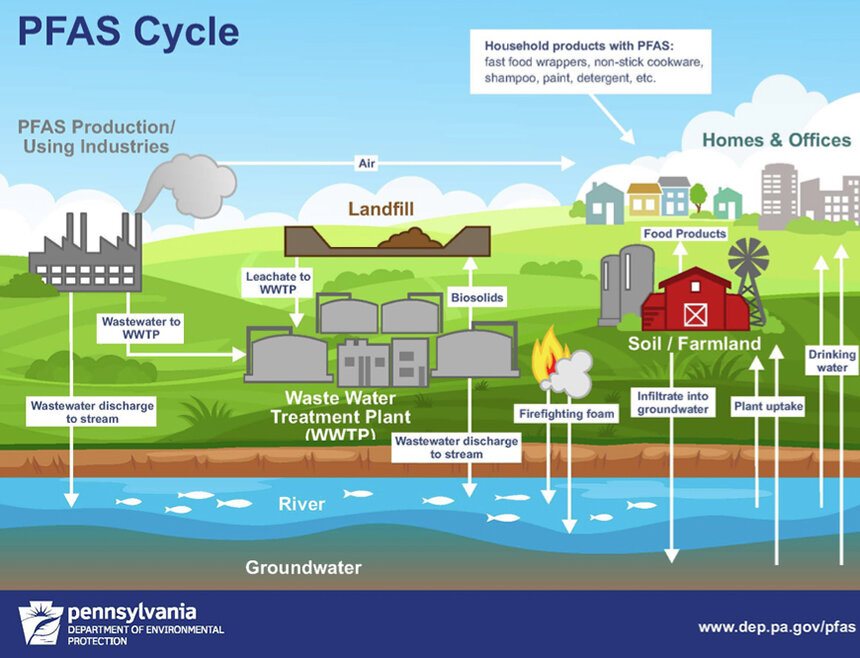Suspected Link Between Triple E and Climate Change
June 10, 2013
Add the deadly eastern equine encephalitis (EEE) virus to the list things we might find more of in our climate-changed future.
As mosquito testing for EEE gets underway this month in Massachusetts and Rhode Island, a recent report from the New England Journal of Medicine draws a potential link between climate change and a 10-year upswing in the number of infections as well as the northward expansion of the virus.
If warmer winters, hotter summers, and more drought and precipitation are likely, so is EEE. The article by Philip M. Armstrong and Theodore G. Andreadis says rainfall and accumulated groundwater increase the habitats for mosquito larvae growth. Warmer winters may help infected insects survive longer and facilitate the migration to once-cooler regions. Warmer summers speed up the development and breeding of infected mosquitoes, which also increases their number and range.
A spike in EEE infections shows that the virus might already be spreading. Between 1991 and 2002, eight cases of EEE were reported in the Northeast. By contrast, 42 cased were report between 2003 and 2012.
Cases were mostly confined to mid- and lower New England, until 2004 when New Hampshire had its first human case of EEE, followed by seven cases and two deaths in 2005. Last September, Vermont reported its first human cases of EEE, which killed two men, ages 89 and 49. After documenting about one case a year from 1990 to 2003, Massachusetts reported 20 human infections between 2004 and 2012. Six of the cases were new to areas such as central Massachusetts and the North Shore, including two people who died from EEE last year.
History of EEE
Armstrong and Andreadis also examine the long-term patterns of EEE. The virus was discovered in the United States in 1933. The first human cases occurred in 1938, when an outbreak in southeastern Massachusetts resulted in 34 EEE infections and 25 deaths. In 1959, another epidemic hit New Jersey, resulting in 32 cases and an equally high mortality rate. Since then, limited outbreaks had occurred in Massachusetts and southern New Jersey. A small number of cases were reported in central New York and Rhode Island.
Although overall cases of EEE have increased, the outbreaks are intermittent and influenced by weather, according to the report’s authors. Infections are still considered rare, as each summer the virus makes a complicated jump from mosquitoes to songbirds living in freshwater swamps. The virus is then transmitted back from birds to mosquitoes that infect humans and other mammals. Although mosquito infections occur in early summer, it may take a month before human cases appear. The infection season typically ends with the first frost.
Armstrong and Andreadis suspect the increase of human cases is attributed to wetlands restoration, suburban development and population growth near EEE habitats. But weather, they say, is likely the most dominant cause. Above-average rainfall, mild winters and EEE activity during the previous year are the biggest factors for giving stamina to the virus.
The New Hampshire and Vermont cases are part of the 10-year increase in EEE infections in humans in new regions while infections are increasing in the usual regions.
“We are now seeing recurrent EEE cases each year and their expansion into northern New England for the first time, a phenomenon that requires further scrutiny,” according to the report.
Climate change may also make the Northeast more hospitable to other rare mosquito borne diseases such as malaria and dengue, according to Armstrong and Andreadis.
EEE is the most deadly mosquito-borne disease in North America, with a survival rate of about 50 percent. Half of survivors suffer severe neurological impairment. Long-term care costs an estimated $3 million per patient during their lifetime. Symptoms begin three to 15 days after a bite from an infected mosquito. Symptoms include fever, headache, nausea, rash, stiff neck, muscle weakness and disorientation.
There is no vaccine and or treatment for EEE. Targeted spraying with trucks is most common in Massachusetts after multiple detections of EEE. Aerial spraying is typically employed after EEE appears in clusters of communities. The pesticide combination of sumithrin and prallethrin is the most popular treatment.
Last year, 21 communities in Bristol and Plymouth counties of Massachusetts received aerial spraying. Environmental groups such as the Northeast Organic Farming Association oppose such pesticide treatment.
Due to its heavy proportion of wooded swamps, southeastern Massachusetts is typically one of the first regions to detect EEE-infected mosquitoes. In 2006, a 58-year-old Everett woman and a 9-year-old Middleboro boy died from EEE. Another person died in 2008 and a Raynham man died in 2011.
Armstrong and Andreadis note that the reasons for the increase in cases and northern expansion aren’t verified. But the changing climate, so far, seems to show the EEE has found a hospitable environment.
Outdoor testing for EEE begins this week in Rhode Island and will continue through September. Massachusetts begins testing June 17.
Categories
Join the Discussion
View CommentsRelated Stories
Your support keeps our reporters on the environmental beat.
Reader support is at the core of our nonprofit news model. Together, we can keep the environment in the headlines.
We use cookies to improve your experience and deliver personalized content. View Cookie Settings



